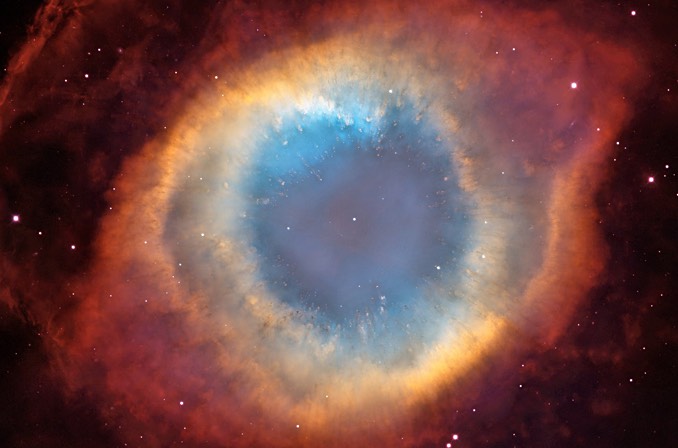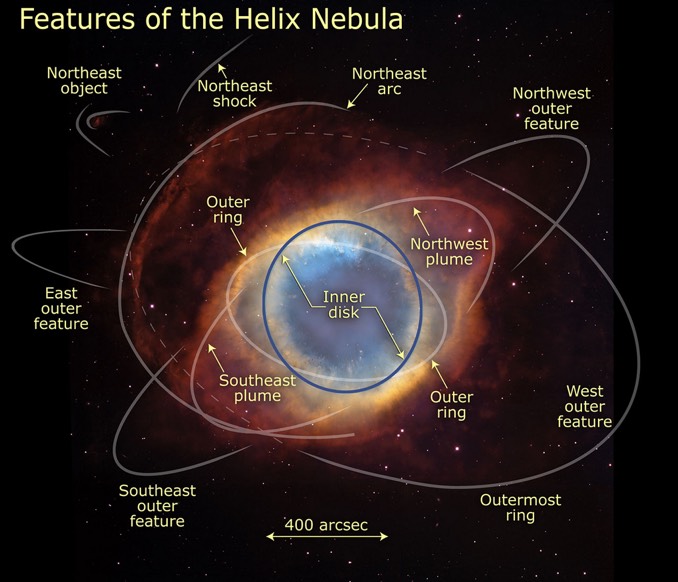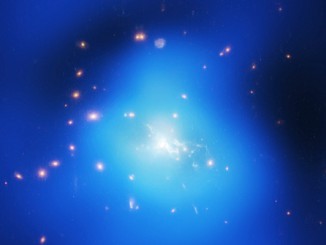The Helix Nebula, aka NGC 7293, is a planetary nebula formed when an intermediate to low-mass star blows off its outer layers near the end of its life. When the star’s core can no longer sustain nuclear fusion, it collapses to form a compact white dwarf. The Helix, located in the constellation Aquarius, is among the closest bright planetary nebulae at a distance of about 655 light years. Familiar to amateur astronomers as a very dim, eyepiece-filling doughnut-shaped cloud of gas, the Helix is much more difficult to interpret when viewed through the Hubble Space Telescope and other large instruments.

“One possible interpretation was that the Helix’s form resembled a snake-like coil, the European Space Agency says in a description of the Hubble image above. “Observations from several observatories, including NASA’s Hubble Space Telescope, established that the Helix’s structure is even more perplexing. Their evidence suggests that the Helix consists of two gaseous disks nearly perpendicular to each other.”
This annotated view below highlights the many subtle features of the Helix.




